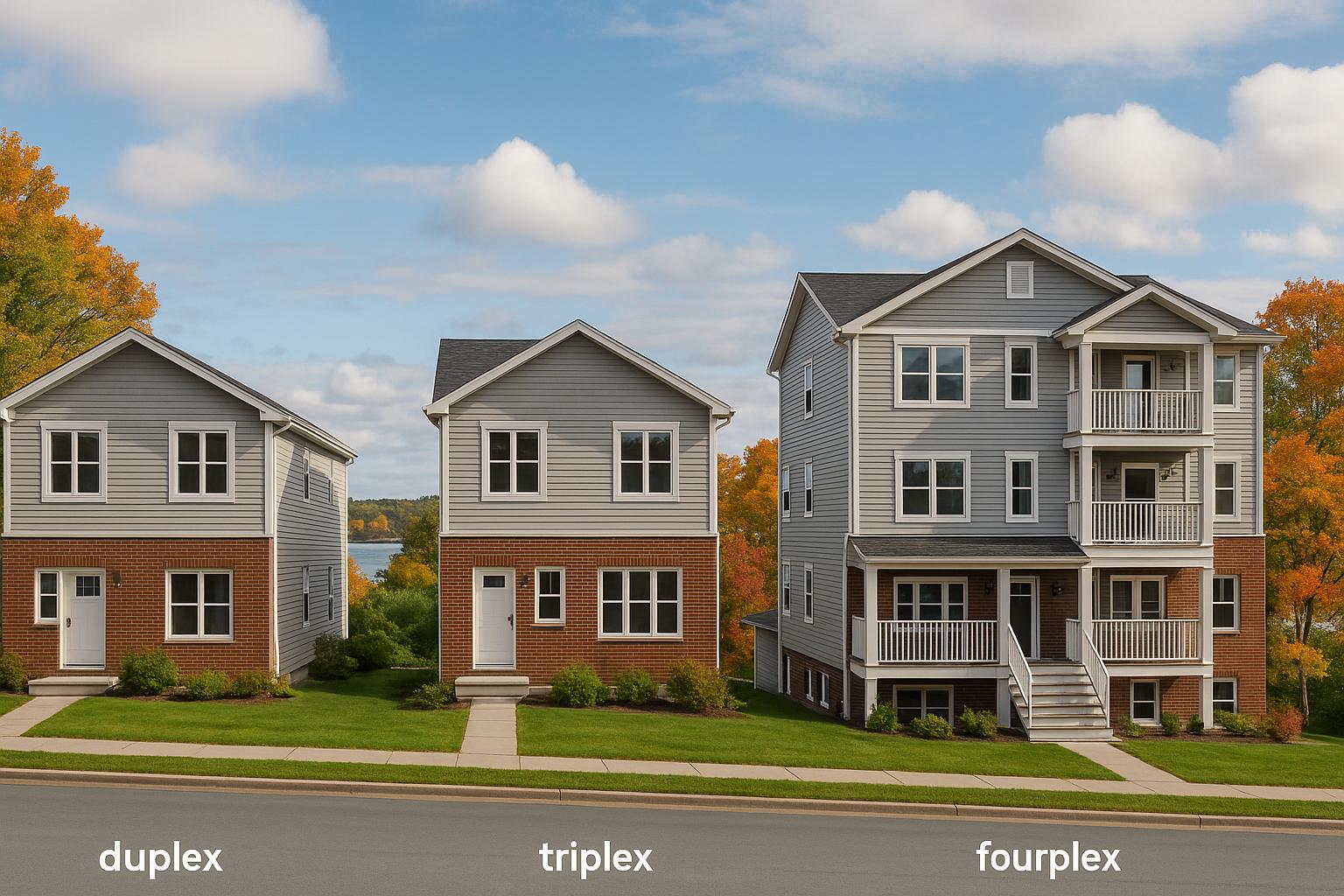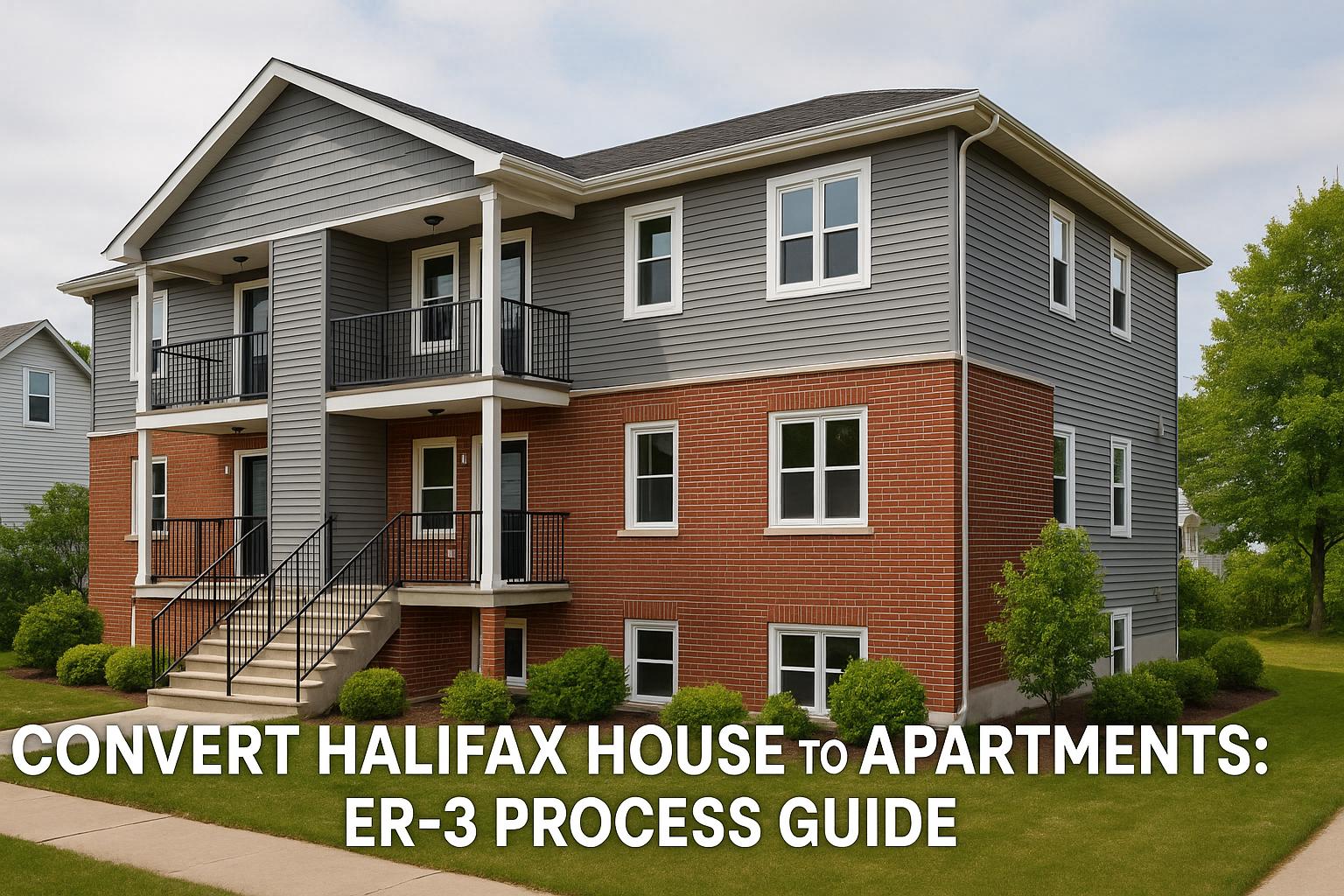For property owners near Halifax looking to transform their land into lucrative multi-unit rental properties, understanding the financial fundamentals of real estate investment is critical. In a recent discussion featuring real estate expert Rodman Schlide and seasoned investor Danny Bait, decades of experience and practical advice were distilled into actionable insights. Whether you're a first-time builder, burned property owner, or an experienced portfolio builder, these insights can guide your journey into rental property construction and management.
This article breaks down the key principles shared in the conversation, offering a comprehensive guide to analyzing rental deals for cash flow and return on investment (ROI). By the end, you'll feel equipped to approach property development with confidence, clarity, and strategy.
The Fundamental Pillars of Real Estate Investment
Danny Bait’s two decades of experience managing over 5,000 rental investments across 40 U.S. metropolitan markets is anchored in unwavering commitment to two principles: quality properties and long-term investment horizons. His central advice? Avoid emotional decision-making and ground every investment in thorough financial and qualitative analysis.
1. Understand the Power of Long-Term Real Estate
Both Schlide and Bait emphasize the enduring value of real estate investments. Bait recalls how his 2002 $127,000 purchase in Arizona doubled in value within three years, allowing him to refinance and expand his portfolio. The lesson: real estate is about patience. Even through downturns, well-chosen properties tend to appreciate over time.
Key insight: Avoid market timing. Instead, focus on acquiring quality properties and holding them for at least 10 years. Real estate offers hedging against inflation and economic fluctuations, making long-term commitment a less risky and more rewarding strategy.
Analysing Deals: Cash Flow, ROI, and Beyond
For landowners preparing to construct multi-unit rental properties, understanding cash flow and return on investment (ROI) is paramount. Bait’s analytical methods emphasize a methodical approach to deal evaluation that balances data-driven decision-making with market context.
2. The Role of Financial Models
Bait describes his reliance on a self-created Excel tool, refined over 15 years, to analyze every potential deal. His team and clients have collectively analyzed over 150,000 properties, allowing them to predict performance with remarkable accuracy.
Key steps in analysis include:
- Breakdown of Operating Costs: Understand fixed expenses like property taxes, insurance, and maintenance, and variable costs such as vacancy or repair contingencies.
- Projected Rental Income: Estimate monthly rental revenue based on comparable properties in the area.
- NOI (Net Operating Income): Subtract expenses from expected rental income to determine profitability.
- Cap Rate Calculations: Compare the NOI to the property purchase price to evaluate return potential.
Bait’s advice for rental property builders? Avoid overly optimistic projections. Instead, adopt a "realistic plus conservative" mindset to ensure your development remains financially sustainable, even under market stress.
Comparing Rental Strategies: Long-Term, Mid-Term, and Short-Term
For landowners in Halifax and beyond, deciding between different rental models is crucial. Each has unique benefits, risks, and operational demands. Let’s explore how these compare:
3. Short-Term Rentals: High Returns, High Complexity
Short-term rentals (e.g., vacation properties on platforms like Airbnb) can generate higher revenues but operate as hospitality businesses. They demand:
- Frequent tenant turnover
- Intense management, cleaning, and maintenance
- Dependence on occupancy rates and fluctuating tourism demand
According to Bait, short-term rentals are not for everyone due to their operational complexity and dependence on external management companies.
4. Mid-Term Rentals: A Balanced Approach
Mid-term rentals, which often cater to insurance claimants, relocating families, or temporary workers, provide a middle ground:
- Higher Income Potential: Mid-term rentals typically fetch premium rents compared to long-term leases.
- Lower Turnover: Tenants stay for months rather than weeks, reducing the administrative burden.
- Flexibility: Properties can shift between short-term and long-term setups if demand changes.
Example: A mid-term rental in suburban Atlanta fetched $5,500 per month (compared to $2,000 for long-term), thanks to an insurance-paid lease for a family displaced by fire. Such renters, often funded by insurance companies, can provide stable, above-market cash flow over extended periods.
5. Long-Term Rentals: Slow and Steady Wins the Race
Long-term rentals require the least management, with tenants signing yearly leases and handling most of their own needs. While returns may not match short or mid-term rentals, long-term leases provide:
- Stable, predictable income
- Reduced operational complexity
- Easier scalability for portfolio owners
Bait advises builders to ensure new rental properties can pivot to long-term leases if their primary strategy (short or mid-term rentals) encounters challenges.
Breaking Down Investment Fears: Divide and Conquer
For many first-time developers or hesitant property owners, fear is a significant barrier. Bait suggests a simple exercise to overcome this paralysis:
- Identify Specific Worries: Is it market crashes? Vacancy risks? Renovation budget overruns? Break down "fear" into tangible concerns.
- Address Each Concern: Research solutions for each fear point. For example, consult property managers to estimate vacancy rates or builders for renovation timelines.
- Act with Confidence: While not all uncertainties can be resolved, tackling 70-80% of concerns often provides enough clarity to move forward.
Key Takeaways
- Patience Pays Off: Real estate is a long-term game. Focus on quality properties and hold for 10+ years to maximize appreciation.
- Always Analyse the Numbers: Avoid emotional decisions. Use financial models to calculate cash flow, NOI, and ROI before committing to a project.
- Choose the Right Rental Model: Understand the operational demands and risks of short-term, mid-term, and long-term rentals. Select a strategy that aligns with your resources and goals.
- Mid-Term Rentals Offer Flexibility: Target insurance claimants, relocating families, or temporary workers for premium rents and lower turnover.
- Plan for Contingencies: Ensure your property can pivot between rental models if market conditions change.
- Break Down Fear: List your concerns, research solutions, and address each one systematically to build confidence.
- Data is Your Friend: Regularly review and refine your projections. Historical analysis can reveal trends and help ensure your investments outperform expectations.
Conclusion
For property owners in Halifax, turning your land into a thriving multi-unit rental development is an achievable goal when guided by sound investment principles. Whether you're new to property development or an experienced investor, the insights shared by Danny Bait and Rodman Schlide provide a framework for success. By focusing on quality, long-term value, and rigorous financial analysis, you can navigate the complexities of rental property construction and management with confidence.
The journey begins with one step: simply do it. By committing to informed, strategic action, you can transform your property into a sustainable, profitable investment for years to come.
Source: "The Smartest Way to Analyze Real Estate Deals for Cash Flow & ROI" - Rodman Schley, YouTube, Aug 25, 2025 - https://www.youtube.com/watch?v=0lJLczTShMM
Use: Embedded for reference. Brief quotes used for commentary/review.



